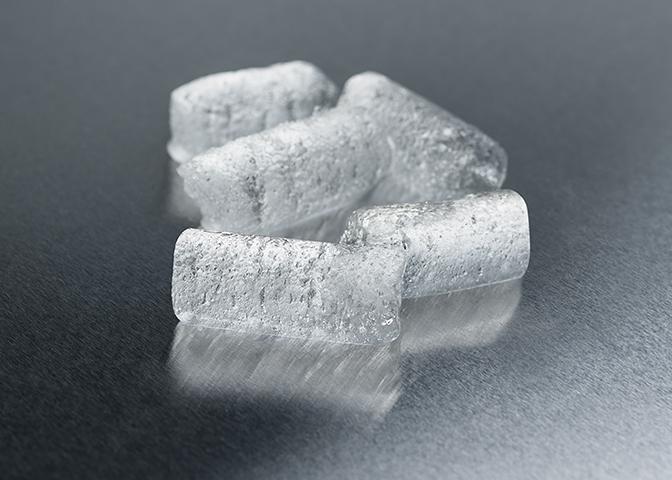If you aren’t offering your customers ice already, maybe you should. Americans consume more than 250 billion pounds of ice per year. Ice enhances many beverage options, including water, and is a contributor to the rebirth of water as a popular hydration choice in all its plain and sparkling forms as Americans become more health conscious. Not to mention that leasing ice machines and ice and water dispensers can be a very profitable business.
Ice is playing a growing role in the OCS market. It provides a nice upgrade to standard filtered water offerings and makes it easier for OCS operators to promote iced coffee and iced tea offerings. An ever-increasing number of offices have at least one ice machine or ice and water dispenser available for employees.
Selecting the right type of ice making equipment for your customer’s location is important to the long-term success of the arrangement. Following are some useful guidelines to help you make the right selection.
Choosing the right ice type
To begin, first select the type of ice that best meets your client’s needs. There are two types of ice appropriate for the OCS market: cubes and nugget ice. These ice types have different properties — hardness, clarity, and liquid displacement, for example. The production process for each differs considerably, resulting in significantly different utility consumption and life-cycle costs for the icemaking equipment.
Cube ice is a clear, hard ice which comes in a variety of shapes and sizes. Cube ice is made when water is pumped into a cold evaporator plate, or “tray” until it freezes. In most systems there is a defrost cycle which recirculates unfrozen water to loosen or “harvest” the cubes from the tray. Cube ice makers generally require a drain to dispose of the harvest water and other melt water.
Nugget ice is produced in a continuous production cycle and can range in size and consistency from an opaque, semi-hard nugget to a semi-clear, hard, formed shape. During the production cycle, cold refrigerant chills an evaporator barrel to cause water in the evaporator to freeze to its inside walls. A slowly rotating auger harvests ice from the evaporator wall and moves it to the top of the evaporator where it is then extruded in a cylindrical or "nugget" shape. An advantage of compressed nugget ice is that it has a distinctly customer-preferred "chewable" texture and is known for taking on the flavor of any beverage it is added to.

Follett Chewblet nugget ice
An important consideration with installation
Ice machine footprint is another important consideration. While both cube and nugget ice machines are available in large capacity configurations suitable to restaurants and other large commercial applications, for office break rooms there is a relatively narrow range of equipment that fits conveniently on a counter or in a small freestanding footprint. Typically, cube ice machines small enough to sit on a counter or a base stand produce anywhere from 12-40 lbs. of ice per day, with storage capacities ranging from 2-8 lbs. Installation requires a water source, a nearby drain and possibly a condensate pump to pump water to the drain depending on location, and a standard 110V/60Hz electrical outlet. In a similar sized footprint nugget ice machines can make up 125 lbs. of ice per day, with storage capacities ranging from 7-15 lbs. Installation requires a water source, and a standard 110V/60Hz electrical outlet. One benefit of these smaller nugget ice machines is that due to the way the make ice, they don’t require a drain.
Sizing up your consumer profile
Perhaps the most important factor in selecting the right ice machine is sizing it correctly for the population it is intended to serve. Ice machine capacity is a function of how much ice is held in storage, and the rate at which the machine makes ice. These calculations can get complicated as the size of the storage hopper isn’t as important as the daily production rate. This “make-up rate”, or speed of production, is the most important factor in serving larger populations.
If you are seeing more of these small commercial ice machines popping-up in places they didn’t exist before, it’s not an illusion. There is a trend toward adding ice and water dispensers into workplaces, especially offices with 25 employees or more (you’ll need a machine that makes about 100 lbs. per day to handle 25 employees, by the way). The secret to getting into this business? Simple: ask your customers if they are interested in ice. Hopefully the answer won’t surprise you.








